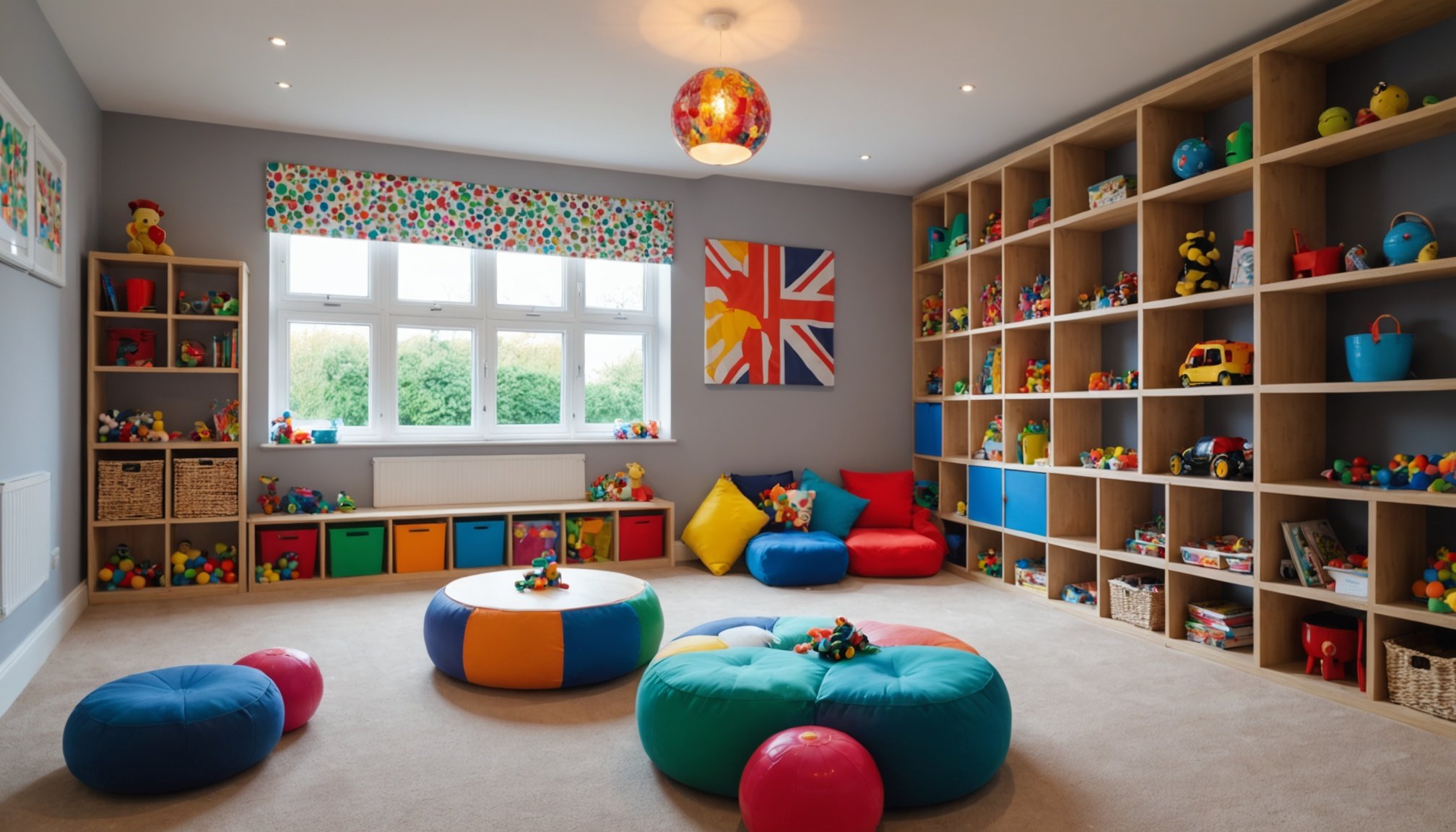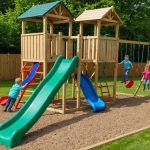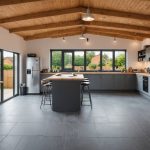Creating a multi-sensory playroom at home can truly elevate your child's learning and development. This space fosters creativity and imagination through various textures, sounds, and visuals. Children engage their senses while building crucial skills in a fun environment. This guide will provide practical ideas to transform your UK home into a vibrant retreat where play meets purpose. Embrace this opportunity to create a unique sanctuary that enhances your child’s experience, ensuring they thrive in their formative years.
Understanding Multi-Sensory Playrooms
Multi-sensory playrooms are specially designed environments that engage multiple senses, offering a sensory-rich experience for children. These playrooms incorporate various sensory stimuli, including visual, auditory, and tactile elements, to create an immersive environment that supports child development.
Sujet a lire : Transform Your UK Country House with a Chic and Practical Mudroom: Essential Tips for Stylish Design
Multi-sensory play is crucial as it stimulates brain function and development, encouraging children to explore and interact with their surroundings in diverse ways. This type of play can enhance cognitive, social, and emotional skills by providing children with opportunities to engage with different textures, sounds, and sights. For example, a child might explore a tactile wall with varying surfaces, listen to soothing music, or watch a light display that changes colors and patterns.
The benefits of a sensory-rich environment are significant. By engaging multiple senses, children can improve their focus, coordination, and problem-solving abilities. Additionally, these environments can be particularly beneficial for children with sensory processing disorders, offering a safe space to explore and adapt to sensory input at their own pace.
Sujet a lire : Discover enchanting book nook ideas that inspire creativity
In summary, multi-sensory playrooms are essential for fostering a holistic approach to child development, promoting an inclusive environment where all children can thrive.
Design Concepts for a Multi-Sensory Playroom
Creating a multi-sensory playroom involves thoughtful playroom design ideas that cater to children's developmental needs. A well-chosen color scheme can significantly enhance mood and creativity. Soft, pastel colors may create a calming atmosphere, while vibrant hues like red and yellow can stimulate energy and enthusiasm. The choice of colors should reflect the desired emotional response and activity level within the playroom.
Incorporating textures through materials and furnishings is another essential aspect. Various textures, such as smooth, rough, or soft surfaces, can be included in the design. These textures can be introduced through rugs, cushions, or wall panels, providing children with tactile experiences that promote sensory exploration.
Creative layouts are crucial in promoting exploration and interaction. By arranging furniture and play equipment in a way that encourages movement and curiosity, children are more likely to engage with their surroundings. Consider open spaces for free movement, along with cozy nooks for quiet reflection or reading.
By integrating these playroom design ideas, a multi-sensory playroom can become a dynamic and engaging environment that supports holistic child development.
DIY Projects for Sensory Play Elements
Creating your own DIY sensory playroom elements can be a rewarding and cost-effective way to enhance a child's sensory experience. One popular project is crafting sensory bins, which are versatile and easy to customize. Start with a shallow container and fill it with materials like rice, sand, or pasta. Add small toys or tools to encourage exploration. This setup provides children with tactile stimulation and can be adapted to various themes, such as nature or outer space.
For a more permanent fixture, consider crafting interactive wall panels. These panels can be made using different materials like felt, sandpaper, or bubble wrap, providing a variety of textures for tactile exploration. Securely attach these materials to a board or directly onto the wall, ensuring they are safely accessible.
Building a reading nook with sound and light features can create a calming environment. Use soft cushions and blankets to make the space inviting. Integrate a small lamp with adjustable lighting and a speaker for playing gentle music or nature sounds. This setup not only encourages reading but also offers a multi-sensory retreat for relaxation. By incorporating these elements, you can create a stimulating and nurturing environment for children to explore.
Safety Considerations in Playroom Design
When designing a playroom, prioritising safety is crucial to ensure a secure environment for children. Implementing child-safe playroom tips can significantly reduce risks and promote a safe play area.
Choosing non-toxic materials and finishes is essential. Opt for paints and finishes labelled as low-VOC (volatile organic compounds) to minimise exposure to harmful chemicals. Select furnishings made from natural materials, avoiding plastics that may contain hazardous substances.
Ensuring furniture stability is another key aspect. Anchor heavy furniture, such as bookshelves and cabinets, to the walls to prevent tipping. Use furniture with rounded edges to reduce the risk of injury. Incorporate soft padding on sharp corners for added protection.
Implementing child-proofing strategies can further enhance safety. Install safety gates at room entrances and staircases to prevent unsupervised access. Use outlet covers to protect curious fingers from electrical hazards. Consider using door stoppers to prevent accidental finger pinches.
Regular maintenance checks for safety hazards are vital to maintaining a secure environment. Inspect play equipment for signs of wear and tear, such as loose screws or splintered wood. Ensure that all toys and materials are age-appropriate and free from choking hazards. By integrating these safety measures, a playroom can remain a safe haven for exploration and learning.
Resources for Sourcing Materials and Services
When designing a multi-sensory playroom, sourcing the right materials is essential. In the UK, several suppliers specialise in sensory play materials. These suppliers offer a range of products, from tactile surfaces to interactive elements, ensuring a comprehensive sensory experience for children.
For those interested in DIY projects, online resources can be a valuable asset. Websites like Crafty Crocodiles and Sensory Direct provide a wide selection of DIY supplies, including fabrics, textures, and sensory tools. These platforms offer the convenience of shopping from home while providing detailed product descriptions to aid in selection.
In addition to materials, enlisting the help of local professionals can enhance the playroom design. Contacting experienced designers or builders familiar with sensory environments can provide expert insights and tailored solutions. Many professionals in the UK offer consultation services, allowing for a collaborative approach to creating an engaging and safe playroom.
To find these professionals, consider reaching out to local design firms or using online directories that list specialists in sensory playroom design. This approach ensures access to skilled individuals who can help bring your vision to life while adhering to safety and developmental standards.
Real-Life Examples of Multi-Sensory Playrooms
Exploring inspirational playroom transformations can provide valuable insights into the potential of multi-sensory environments. In the UK, several case studies highlight successful playroom designs that have significantly impacted child development.
One notable example is a playroom designed for a primary school in London. This space integrates a variety of sensory elements, including a fibre optic light curtain and a sound-activated interactive floor. These features have been instrumental in enhancing sensory engagement and promoting active learning among students.
Photo galleries often showcase these sensory elements in action, offering a visual understanding of their impact. Images of children interacting with tactile walls, colourful light displays, and sound-responsive installations demonstrate how these environments foster exploration and creativity.
Testimonials from parents and caregivers further underscore the benefits of such playrooms. Many express gratitude for the positive changes observed in their children's behaviour and development. One parent noted that their child, who previously struggled with sensory processing, now shows improved focus and communication skills.
These real-life examples highlight the transformative power of well-designed multi-sensory playrooms, inspiring others to consider similar approaches in their own spaces.
Engaging Activities for a Multi-Sensory Playroom
Creating a vibrant environment with sensory playroom activities can greatly enhance a child's development. Interactive games are a fantastic way to stimulate multiple senses. Consider setting up a "sound and light" game where children match different sounds with corresponding light patterns. This can help improve auditory and visual processing skills.
Craft and art projects are another excellent option. Encourage creativity by providing materials like clay, paint, and textured paper. Children can create art pieces that involve tactile exploration, such as finger painting or clay modelling. These activities not only foster creativity but also enhance fine motor skills.
To keep the playroom engaging throughout the year, incorporate seasonal activities. During autumn, organise a leaf-printing session using real leaves and paint. In winter, create a "snow" sensory bin using cotton balls and white sand. These activities can introduce children to the changing seasons while providing varied sensory experiences.
By integrating these diverse sensory playroom activities, you can ensure the playroom remains a dynamic space that promotes exploration and learning.











